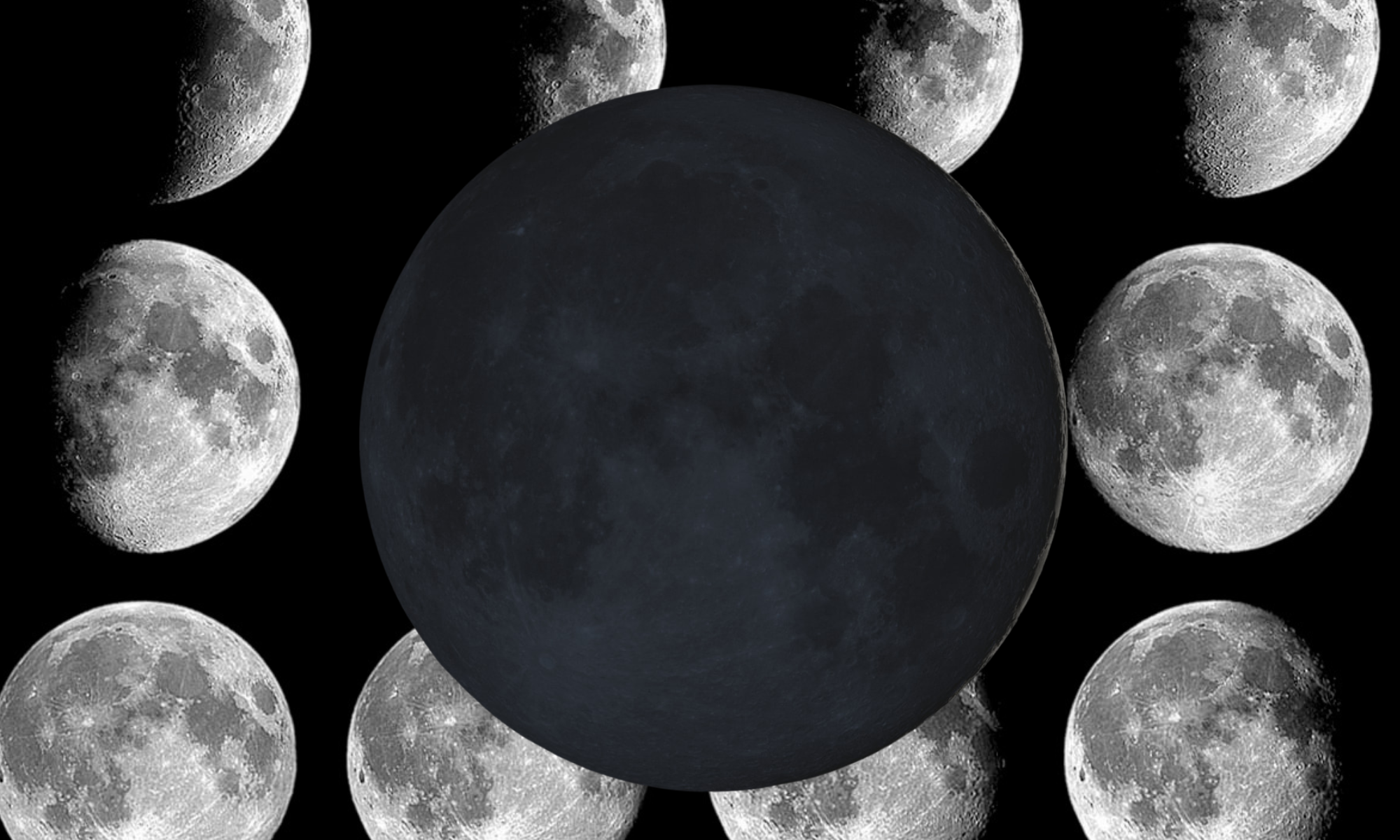Rare 'black moon' new moon of May 2023 rises tonight
Unfortunately, you won't be able to see it.

The moon will rise in the sky today, but you won't be able to see it. It's the new moon, the first of four phases of the lunar cycle, which is not visible to us here on Earth.
Even though you can't see it, it is a particularly special new moon today — a rare "black moon."
Black moons aren't a technical astronomy term, but colloquially, they have two different definitions. The first is the second new moon of a calendar month. Because the lunar cycle is 29.5 days long, it almost matches up to the calendar months of the year, so we typically only have one of each lunar phase per month. But the slight offset means that we sometimes get a double phase in a single calendar month. By the terms of this definition, a black moon is similar to a blue moon (as in, "once in a blue moon"), which is the second full moon in a month.
Related: Full moon calendar 2023: When to see the next full moon

Looking for a telescope to observe the moon or other awesome sights in the night sky? We recommend the Celestron Astro Fi 102 as the top pick in our best beginner's telescope guide.
The second definition of a black moon is the third new moon in a season that has four new moons. Seasons comprise three months, and typically, they also feature three new moons. But when a season has a fourth new moon, the third is designated a "black moon." This, according to Time and Date, only happens every 33 months or so.
And if you're wondering why new moons — and therefore black moons — are invisible, it's because the part of the moon that's illuminated by the sun is facing away from us. During a new moon, Earth's natural satellite is located between our planet and the sun, so we only "see" the dark part. (The reason we don't have a solar eclipse every month is because the moon orbits our planet on an incline, so the moon doesn't block out the sun on every orbit.)
While you can't see the moon tonight, that is actually a good thing for stargazers. Since the moon is dark, its bright light won't drown out dimmer celestial objects like planets and stars. So if you're itching to see something other than the moon in the night sky, tonight might be the night!
Get the Space.com Newsletter
Breaking space news, the latest updates on rocket launches, skywatching events and more!
As you're prepping for a stargazing session, check out our guides to the best telescopes and best binoculars for an equipment upgrade. And for astrophotographers, we've also shared our picks for the best cameras for astrophotography and best lenses for astrophotography.
Editor's Note: If you snap an image of the new moon and would like to share it with Space.com's readers, send your photo(s), comments, and your name and location to spacephotos@space.com.
Follow Stefanie Waldek on Twitter @StefanieWaldek. Follow us on Twitter @Spacedotcom and on Facebook.
Join our Space Forums to keep talking space on the latest missions, night sky and more! And if you have a news tip, correction or comment, let us know at: community@space.com.

Space.com contributing writer Stefanie Waldek is a self-taught space nerd and aviation geek who is passionate about all things spaceflight and astronomy. With a background in travel and design journalism, as well as a Bachelor of Arts degree from New York University, she specializes in the budding space tourism industry and Earth-based astrotourism. In her free time, you can find her watching rocket launches or looking up at the stars, wondering what is out there. Learn more about her work at www.stefaniewaldek.com.









